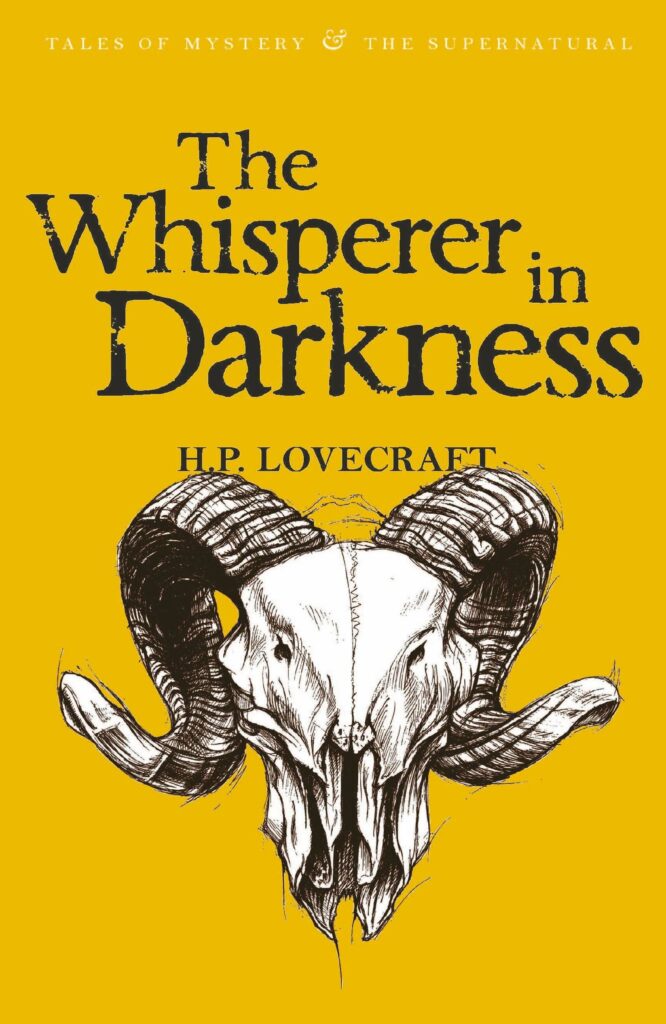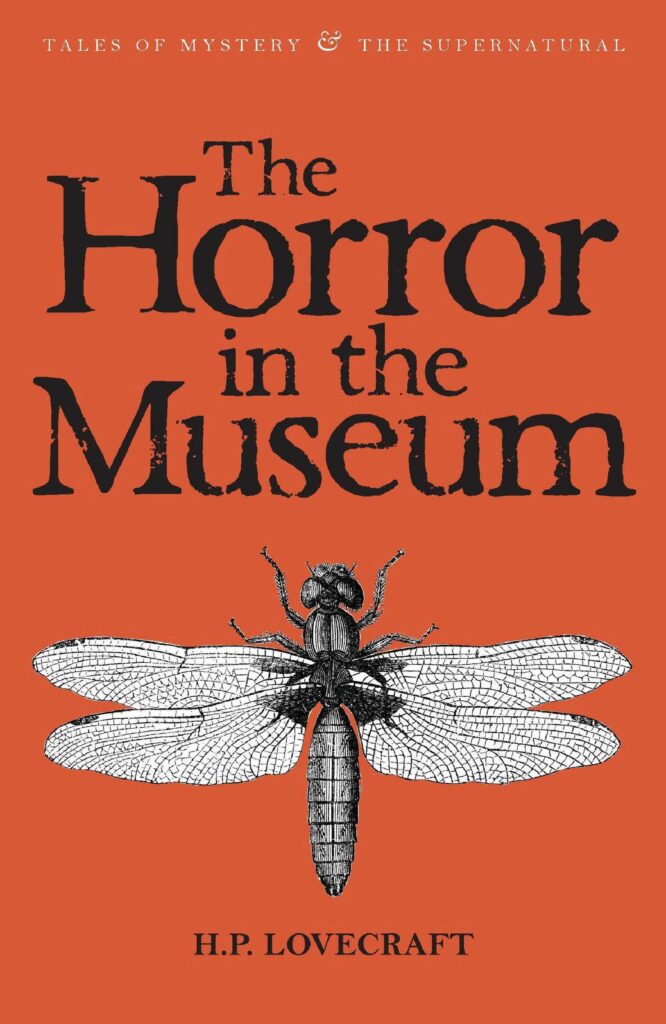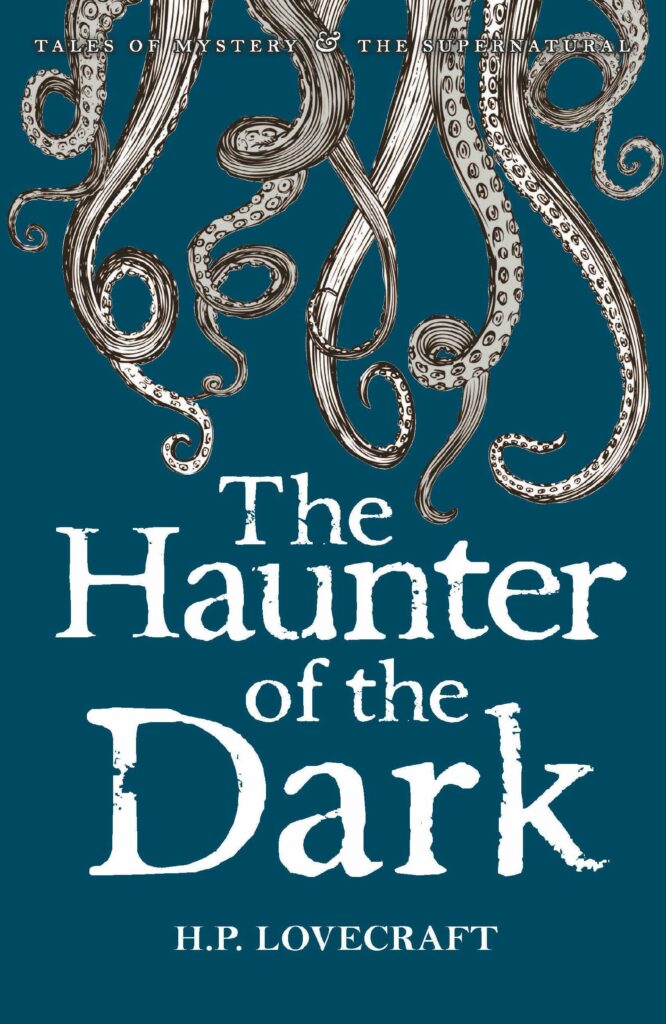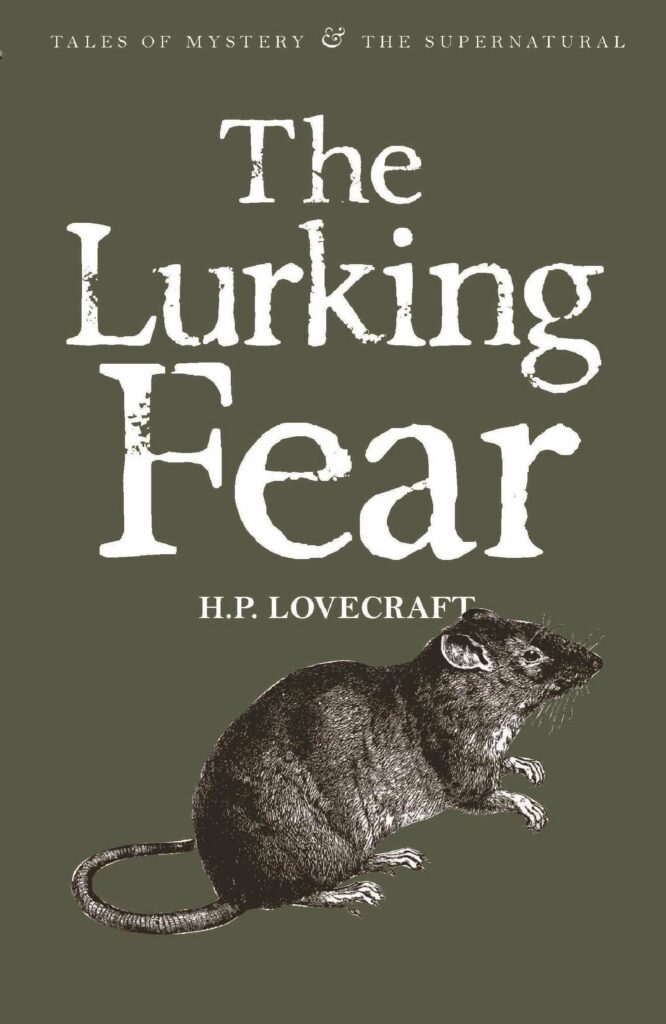
Into the Arena of the Extra – Dimensionals
David Stuart Davies looks at the work of H.P. Lovecraft
‘The oldest and strongest emotion of mankind is fear, and the oldest and strongest kind of fear is fear of the unknown. H. P. Lovecraft
Today Howard Phillip Lovecraft (1890 – 1937) is regarded as the doyen of writers of weird fiction, that strange, disturbing blend of the horror, supernatural and fantasy genres. He wished to communicate ‘dread suspense’ (his words) through his writings. However, his success and fame came posthumously. At the time of his death, he was virtually unknown and had only published his work in pulp magazines in America.
Lovecraft was born in Providence, Rhode Island where he spent most of his life. He was a sensitive child, his insecurities enhanced by his father being committed to a mental institution when the boy was only three years old. Even as a teenager Lovecraft was something of a recluse, losing himself in the strange little tales that he enjoyed writing. Poe was an early influence and rather like this author’s detective C. Auguste Dupin, Lovecraft rarely went out of the house until after it was dark.
In 1913 he wrote a letter to The Argosy, a pulp magazine, complaining about the insipidness of the love stories in the publication. The ensuing debate in the magazine’s letters column caught the eye of Edward F. Daas, president of the United Amateur Press Association (UAPA), who invited Lovecraft to join the organisation in 1914. This encouraged the young author to start submitting his stories for publication but he was 31 before a work of his appeared in a professional magazine. However, by the age of 34, he was a regular contributor to the newly founded Weird Tales magazine.
In the mid-1920s Lovecraft married and struggled financially, taking on a series of menial jobs to help maintain the marital home. It was during this period that he produced some of his most celebrated tales including a series of loosely-related stories that concerned the ‘Great Old Ones,’ beings from outer space who have taken up residence on earth to cause havoc. These first appeared in the 1926 short story The Call of Cthulhu. The creature of the title is ‘a monster of vaguely anthropoid outline, but with an octopus-like head whose face was a mass of feelers’ … ‘one of a race of vast, unknowable elder beings who lurk at the crossroads between dimensions, or sleep fitfully in underwater cities, waiting until the time is right to rise again and devour all life on the planet’. After his death, the vast mythology Lovecraft created around this creature was named the Cthulhu Mythos by his collaborator August Derleth.
A cornerstone of the Cthulhu Mythos is the esoteric volume the Necronomicon, referred to in many of his stories – allegedly written by ‘The Mad Arab’ in the eighth century and containing horrendous spells, evil workings and Dark Things Best Left Alone. The book is lodged in the library of Miskatonic University. Other tales in the Mythos series include The Case of Charles Dexter Ward (1927) The Dunwich Horror (1928), The Whisperer in the Darkness (1930), and The Shadow out of Time (1934-5).
There can be no doubt that Lovecraft’s work challenges the dull imagination, expands expectations and attempts to create landscapes and creatures of unique and disturbing qualities. His stories are not an easy read. What Lovecraft’s typical protagonist ultimately discovers, underneath the placid surface of conventional reality, is the existence of heretofore unknown ‘gods’ and other less exalted but equally unpleasant beings. Important figures in the Mythos include Yog-Sothoth (‘The Lurker on the Threshold’), Shub-Niggurath (‘The Black Goat of the Woods With a Thousand Young’), Hastur (‘The Unspeakable One’), Nyarlathotep (‘The Crawling Chaos’) and the supreme entity, Azathoth, a ‘blind, idiot god,’ who, we are told, resides at the centre of the universe where he/it ‘gnaws shapeless and ravenous amidst the muffled, maddening beat of vile drums and the thin, monotonous whine of accursed flutes.’
Some critics believe that Lovecraft intended this pantheon as a metaphor for mankind’s harsh encounter with the mindless, mechanical universe unveiled by modern science at the turn of the century. Extensively self-educated, he took a keen interest in science and wrote about astronomy, chemistry and other fields for newspapers and journals. ‘All my tales,’ he wrote, ‘are based on the fundamental premise that common human laws and interests and emotions have no validity or significance in the vast cosmos-at-large.’
It is fair to say that Lovecraft’s work is deeply pessimistic and cynical, challenging the values of the Enlightenment, Romanticism and Christianity. There are no smiles and happy endings in his fiction, just glimpses of horror and the grotesque realities which are only thinly veiled from our eyes.
Never able to support himself from earnings as an author and editor, Lovecraft saw commercial success increasingly elude him. This was partly because he lacked the confidence and drive to promote himself. He subsisted in progressively straitened circumstances in his last years. A small inheritance that had helped him subsist was completely spent by the time he died at the age of 46.
Although Lovecraft’s readership was limited during his life, his reputation has grown over the decades. He is now commonly regarded as one of the most influential horror writers of the 20th Century, exerting widespread and indirect influence, and frequently compared to his childhood hero, Edgar Allan Poe.
Books associated with this article

The Whisperer in Darkness: Collected Stories Volume I
H.P. Lovecraft

The Horror in the Museum: Collected Short Stories Volume 2
H.P. Lovecraft

The Haunter of the Dark: Collected Short Stories Volume 3
H.P. Lovecraft
